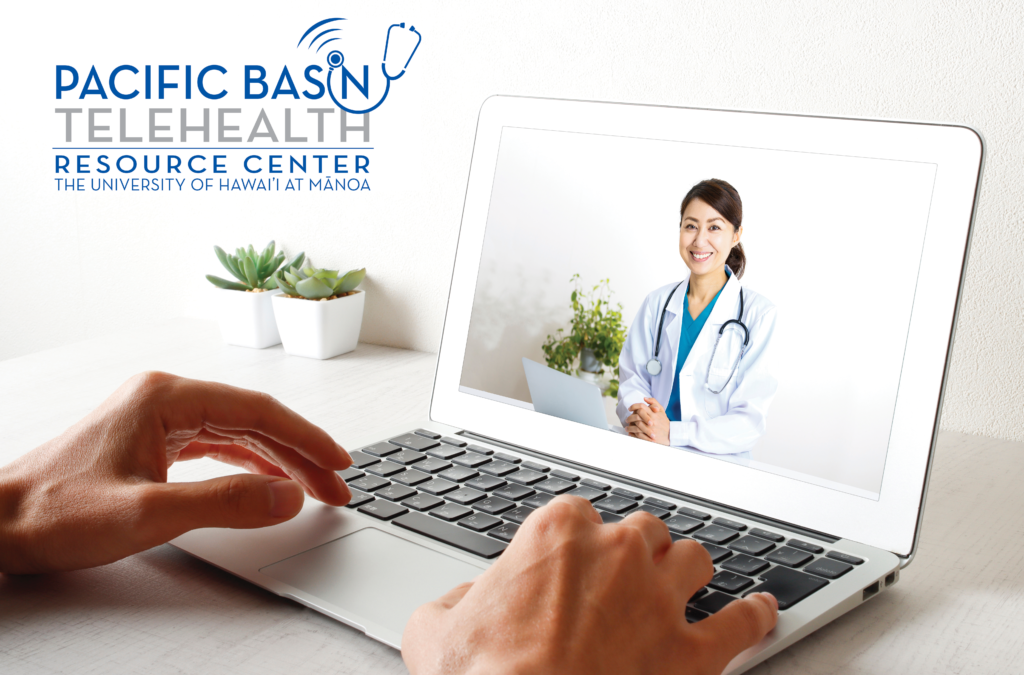Promoting Telehealth and Digital Equity
In early January 2020, news about a developing respiratory disease in Wuhan, China began to spread around the world. Within a matter of weeks, the COVID-19 virus itself went global—reaching pandemic levels that forced entire countries into lockdown to prevent its spread.
When the COVID-19 virus eventually reached Hawai‘i, it forced healthcare institutions to find alternative methods of providing patient care to limit potential exposure to physicians, nurses, other healthcare providers, and of course the patients themselves. Telehealth, which is defined as the delivery of healthcare via telecommunications technologies such as computers or mobile phones, emerged as the frontrunner in similar fashion to how organizations gravitated to virtual meeting platforms like Zoom, Microsoft Teams or Google Meet to safely conduct daily business.

“Telehealth is a natural fit for our island state, where the majority of health specialists are in Honolulu, but need to service patients on the other islands,” said Christina Higa, co-director of the Pacific Basin Telehealth Resource Center (PBTRC). “But even as recently as five to six years ago, the telehealth adoption rate was lagging with less than five percent of healthcare providers adopting the technology. The pandemic changed that. Now most health providers in Hawai‘i have offered or contemplated telehealth services.”
Much of the framework, guidelines and policies in support of telehealth in Hawai‘i can be attributed to the behind-the-scene efforts of PBTRC, which was established at the University of Hawai‘i at Mānoa (UH Mānoa) in 2010 to expand the availability of healthcare services in the state and around the Pacific. A collaboration between the UH Mānoa College of Social Sciences and the John A. Burns School of Medicine, PBTRC is one of 14 federally funded telehealth resource centers in the U.S. and is a member of the National Consortium of Telehealth Resource Centers.
During the pandemic, PBTRC immediately channeled its resources into helping the healthcare community focus on how to help people continue to have their healthcare needs met. PBTRC is currently working with the state Department of Health and Hawai‘i State Public Library System to establish Hawai‘i Telehealth Access Points at libraries, where internet connections and rooms can be used for telehealth consultations. Under the program, which just received $3.7 million in funding from the Centers for Disease Control and Prevention, libraries can also loan out MiFi units (mobile Wi-Fi hotspots) to people wanting to attend telehealth consults from the privacy of their own homes. The project will also enable health navigators and community health workers to assist patients with connecting to their telehealth appointments and accessing other health resources. As these support systems develop, PBTRC will continue working with healthcare advocates to promote supportive policies, payment structures and incentives for telehealth utilization.
“The collaboration that took place, and that is still taking place, is impressive,” said Deborah Peters, PBTRC co-director and JABSOM senior scientist and research manager. “The urgency of the work that we were doing required us to break down silos, roll up our sleeves, and dive in. Everywhere you looked people were working together around the clock to immediately ramp up telehealth services—especially when the state went into stay-at-home quarantine orders.”
As Hawai‘i continues its transition in the area of healthcare delivery, the goal is to balance the conveniences and efficiencies of virtual care against in-person care. While some worry that the move may result in less personal connection, others believe it’s an opportunity for better coordination of care and increased family engagement.
“Today telehealth has become a common means of delivery for healthcare, bringing increased conveniences and efficiencies to both physicians and their patients across the state. But some of Hawai‘i’s most vulnerable populations in rural areas still face challenges to widespread adoption,” said Higa. “PBTRC is now pivoting its focus to utilize telehealth technology to bring more health equity to these groups. For rural areas, particularly on the neighboring islands, transportation to clinics or to O‘ahu-based specialists are a challenge. Telehealth changes that dynamic by removing an important barrier to healthcare and bringing us a step closer to health equity throughout the state.”
With a decade of experience to call upon, Higa is thankful that PBTRC was able to step into a significant leadership role in 2020. With technology becoming more sophisticated, mobile and integrated into daily lives, the stage is set for the continued use of technology to achieve true patient-centered care—with PBTRC continuing to serve as an important telehealth resource to help bolster Hawai‘i’s ability to deal with future pandemics and other crises.
“This is an issue of digital equity. The lack of access to broadband was highlighted during this pandemic, because if you didn’t have a good Internet connection, your children couldn’t go to school online, you couldn’t telework or even get healthcare via telehealth,” said Higa. “The good news is that federal and state governments are recognizing these issues and have developed many programs to address them. We are tracking these initiatives, building on them and moving forward in a big way.”
Learn more about the Pacific Basin Telehealth Resource Center at https://www.pbtrc.org/.

